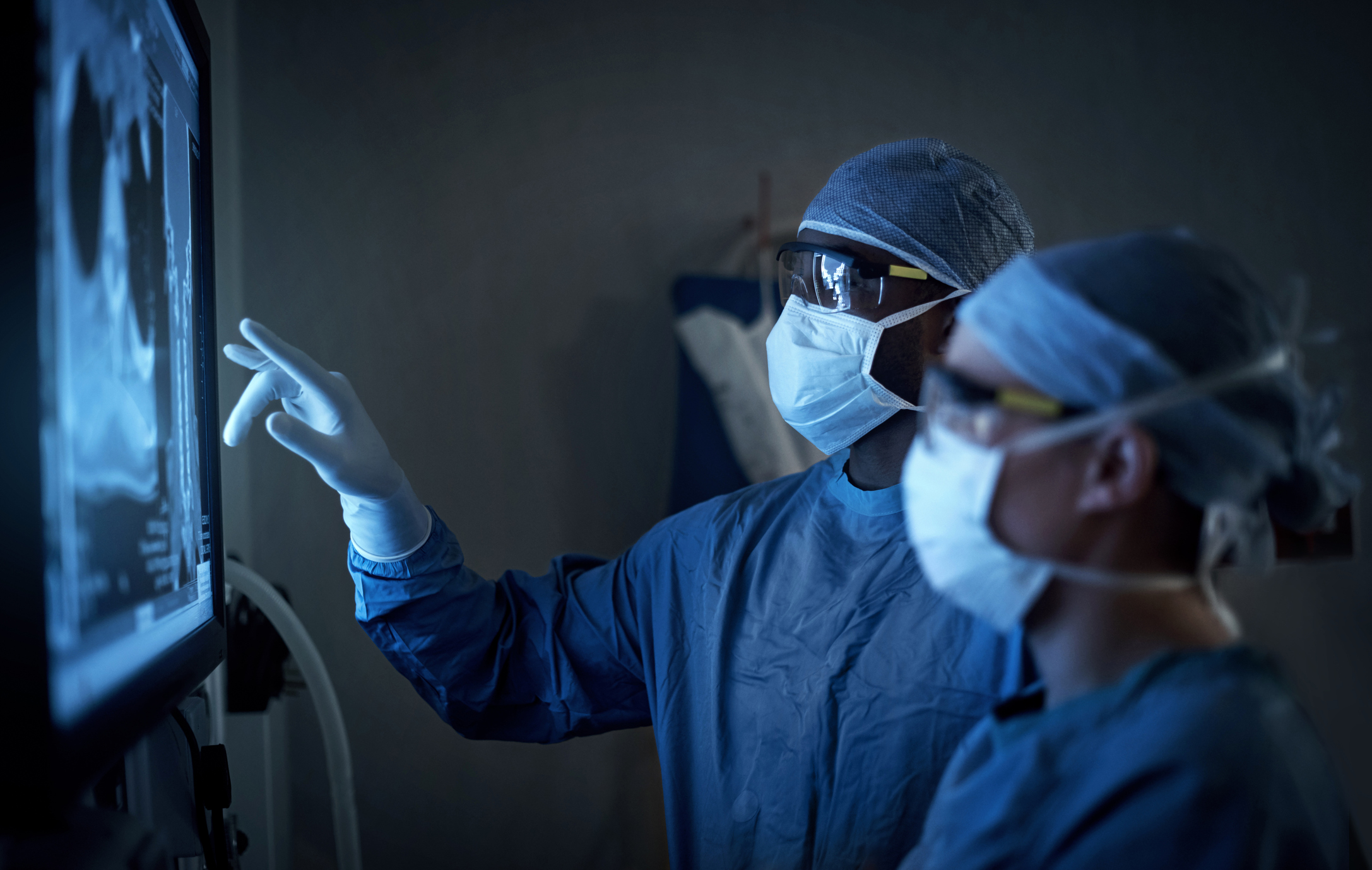Specialty Services

Angioplasty
Angioplasty is used to open clogged arteries and increase blood flow to the heart. A tube with a balloon tip is moved through the clogged artery and inflated to open the artery. This procedure is part of a heart catheterization, and you cannot eat or drink anything for at least 6 to 8 hours before the procedure. You may also have bedrest afterward and may need to stay overnight in the hospital.
Atherectomy
Atherectomy is a treatment that may be done during a heart catheterization to open a blocked artery. A special device is used to remove fat and calcium build-up (plaque) from the artery wall.
Chest X-Ray
A chest x-ray is a picture of the inside of your chest. It shows the size of the heart and helps find problems with the heart and lungs. You will sit, stand or lie down near a film plate and the picture (x-ray) will be quickly taken. You may be asked to change positions several times until all the needed x-rays are taken.
Electrocardiogram (ECG or EKG)
An ECG or EKG is a recording of the electrical activity of the heart (your heart beats). This test is done to help your doctor find out if you have heart disease. A heart attack (or stroke) can be caused by heart disease. You will lie on your back in bed while a technician places special pads on your chest, arms and legs. The pads are connected to wires that help a machine read your heart rhythms.
Echocardiogram/Transthoracic (TTE)
An echocardiogram is a test that takes moving pictures of the heart using sound waves (ultrasound). The TTE is the most used method of taking these pictures. It shows the size and shape of your heart and how well your heart is working. The test can detect several problems that could lead to a heart attack or stroke. You will lie on a bed on your side or back. A technician will put special jelly on a wand and move it over your chest. A video can be made of the pictures. The test does not hurt, and you can watch while it is being done. You don’t have to do any special preparation before having a TTE.
Heart Catheterization (Heart Cath)
Heart catheterization will show the doctor how well your heart is working and how well your heart muscle is getting blood. It will detect if there are any blockages in the arteries feeding your heart. A tube is put into a blood vessel in your groin or arm. The tube is then moved up to your heart. Dye is put into the tube and pictures are taken of your heart and arteries. You may be awake during the test, and you may have medicine to help you relax. You cannot eat or drink anything for at least 6 to 8 hours before the procedure, and you may have bedrest for several hours afterward. The Georgia Heart Center leads the region in performing heart catheterizations (more than 6,000 pre-COVID).
Stent
Stenting is a procedure that is part of a heart cath along with angioplasty. Once the plaque buildup is compressed using angioplasty, a small wire tube (stent) is inserted to hold the artery open.
Stress Test
A stress test detects and records your heartbeat and blood pressure at different times during the test. First, it will record these while you are resting. Then you may be asked to walk or ride a stationary bike or treadmill to see how your heart responds to exercise. If you cannot exercise, the doctor may use medicine instead of a bike or treadmill. This test should not hurt, but you may be required to exercise harder than you usually do.
Telemetry or Holter Monitor
Telemetry and Holter monitoring are like an ECG. These small machines detect your heart‘s rhythm and transmit the rhythm to a central monitor or record the rhythm for analysis later. Sticky pads attached to wires will be placed on your chest. The wires will connect to a small box that you will carry in a bag or in a packet. You will be able to eat, sleep, walk and lie in bed while you are monitored.
Transesophageal Echocardiogram (TEE)
This test is like the TTE, but instead of taking pictures from the outside of the body, a special device called a transducer is passed down the esophagus (swallowing tube). This makes it possible for pictures to be made of the back as well as the front of the heart. This test requires sedation and medicine applied to the throat to ease the discomfort. You must not eat or drink anything for 6 to 8 hours before this test. You will not be able to drive for at least 24 hours after this test. Please be sure to have someone with you that can drive you if you will be going home after this test.